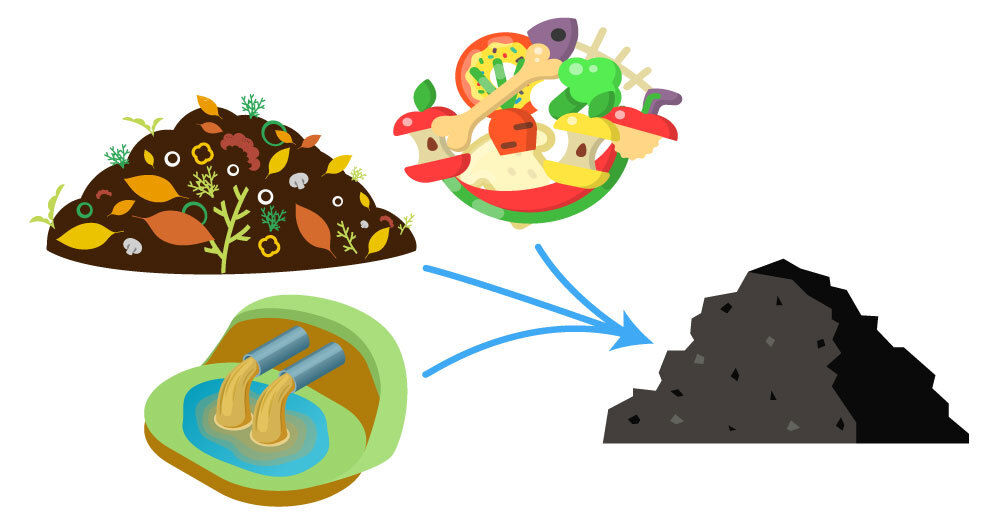As India gears up to launch its carbon market in 2026, biochar, a carbon-rich material made from agricultural and organic waste, is gaining attention as a sustainable solution for carbon capture and waste management. Despite its immense potential, biochar remains underutilised due to lack of policy support, market structures and awareness.

What is Biochar and Why is it Important?
- Biochar is a type of charcoal/black carbon produced by heating organic waste (like crop residue or solid municipal waste) in a low-oxygen environment.
- It locks carbon into the soil for hundreds of years, reducing greenhouse gases and improving soil quality.
- It is an effective long-term carbon sink.
Biochar Potential in India:
- India generates over 600 million tonnes of agricultural waste and 60 million tonnes of municipal waste each year, much of which is burned or dumped, contributing to pollution.
- By converting just 30–50% of this waste into biochar, India could:
- Produce 15–26 million tonnes of biochar
- Remove 0.1 gigatonnes of Carbon Dioxide (CO₂) equivalent emissions annually
- Biochar production also provides with the following:
- Syngas (20–30 million tonnes) which can generate 8–13 TWh of electricity, replacing about 0.5–0.7 million tonnes of coal
- Bio-oil (24–40 million tonnes) which can offset 12–19 million tonnes of diesel/kerosene, reducing oil imports and fossil fuel emissions by more than 2%
Applications of Biochar in Key Sectors:
- Agriculture: It improves soil health and water retention, especially in semi-arid and nutrient-poor regions. It can reduce nitrous oxide emissions by 30–50%, which is vital as this gas has 273x more warming potential than CO₂. Its application leads to higher crop yields (10–25%) and reduced fertilizer needs (by 10–20%). Biochar can also enhance soil organic carbon, helping restore degraded soils.
- Construction: Adding just 2–5% biochar in concrete improves strength and heat resistance. It helps capture 115 kg of CO₂ per cubic metre of concrete, turning buildings into carbon sinks.
- Wastewater Treatment: One kg of biochar can help treat 200–500 litres of wastewater. India’s untreated wastewater (~72%) could use 2.5–6.3 million tonnes of biochar annually.
- Carbon Capture: Biochar can be modified to absorb CO₂ from industrial exhausts, though current efficiency is lower than traditional methods.
- Circular Economy: Biochar aligns with the circular economy model, waste to wealth.

Why is Biochar Still Not Widely Adopted?
- It remains underrepresented in carbon credit systems due to the absence of standardised feedstock markets and consistent carbon accounting methods, which undermine investor confidence.
- Limited policy support, low public awareness, and no coordinated action across sectors.
- No strong carbon credit mechanism to reward users and producers.
Steps that can be undertaken for Large-Scale Adoption of Biochar:
- R&D Support: Develop region-specific feedstock guidelines and technologies.
- Policy Integration: Link biochar with Crop residue management schemes, Bioenergy programs and State Action Plans on Climate Change
- Carbon Market Recognition: Allow biochar to earn carbon credits, giving financial incentives to farmers and investors.
- Village-Level Deployment: Establish small-scale biochar units that can create over 5 lakh rural jobs.
- Linkage with National Missions: Can be linked with Mission LiFE and the Swachh Bharat Abhiyan.
Biochar offers a powerful tool for India’s climate smart and sustainable agriculture by enhancing soil health, improving water and nutrient retention, and bolstering climate resilience. Its integration can reduce dependency on synthetic inputs, aligning with organic farming principles. Crucially, biochar provides a significant mechanism for carbon sequestration and mitigating greenhouse gas emissions from agriculture, contributing to India’s climate goals. Leveraging this “black gold” through targeted policy support and research is essential for a greener, more resilient future.
Practice UPSC Mains Question
- Biochar is emerging as a multipurpose tool for sustainable development in India. Discuss its potential across sectors and the challenges in its adoption.
- What are the salient features of ‘Waste-to-Energy’ policy of India? Describe the role of waste to energy technologies in achieving energy security in India.
Get an IAS/IPS ranker as your 1: 1 personal mentor for UPSC 2024

